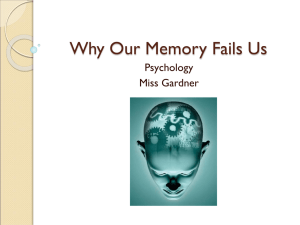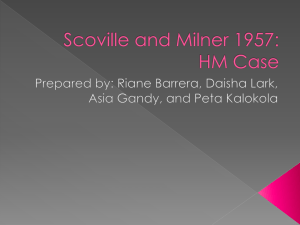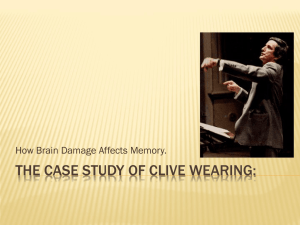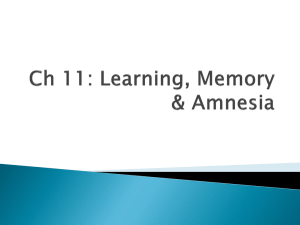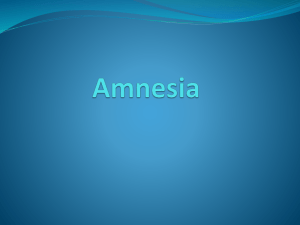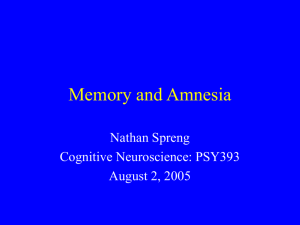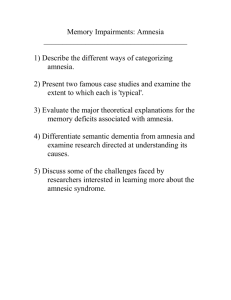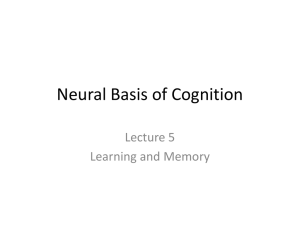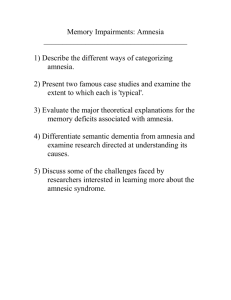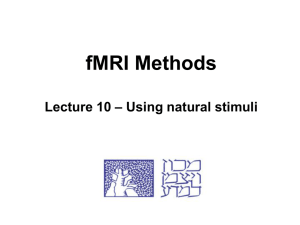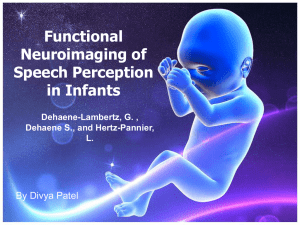final1-orientation-final-summary
advertisement
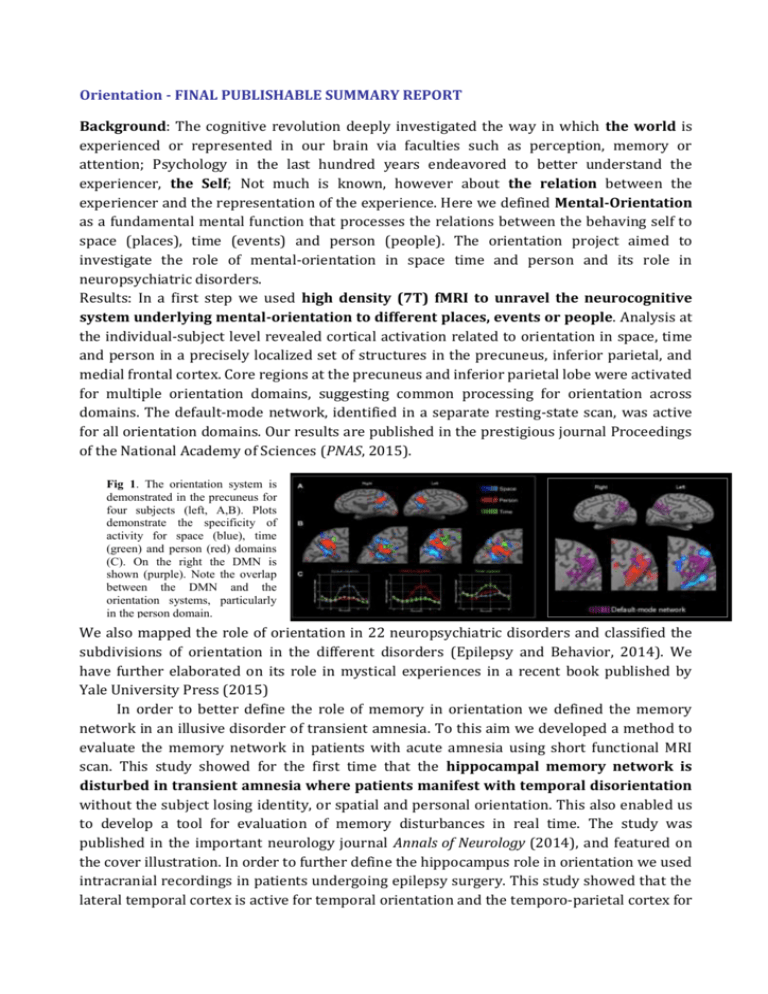
Orientation - FINAL PUBLISHABLE SUMMARY REPORT Background: The cognitive revolution deeply investigated the way in which the world is experienced or represented in our brain via faculties such as perception, memory or attention; Psychology in the last hundred years endeavored to better understand the experiencer, the Self; Not much is known, however about the relation between the experiencer and the representation of the experience. Here we defined Mental-Orientation as a fundamental mental function that processes the relations between the behaving self to space (places), time (events) and person (people). The orientation project aimed to investigate the role of mental-orientation in space time and person and its role in neuropsychiatric disorders. Results: In a first step we used high density (7T) fMRI to unravel the neurocognitive system underlying mental-orientation to different places, events or people. Analysis at the individual-subject level revealed cortical activation related to orientation in space, time and person in a precisely localized set of structures in the precuneus, inferior parietal, and medial frontal cortex. Core regions at the precuneus and inferior parietal lobe were activated for multiple orientation domains, suggesting common processing for orientation across domains. The default-mode network, identified in a separate resting-state scan, was active for all orientation domains. Our results are published in the prestigious journal Proceedings of the National Academy of Sciences (PNAS, 2015). Fig 1. The orientation system is demonstrated in the precuneus for four subjects (left, A,B). Plots demonstrate the specificity of activity for space (blue), time (green) and person (red) domains (C). On the right the DMN is shown (purple). Note the overlap between the DMN and the orientation systems, particularly in the person domain. We also mapped the role of orientation in 22 neuropsychiatric disorders and classified the subdivisions of orientation in the different disorders (Epilepsy and Behavior, 2014). We have further elaborated on its role in mystical experiences in a recent book published by Yale University Press (2015) In order to better define the role of memory in orientation we defined the memory network in an illusive disorder of transient amnesia. To this aim we developed a method to evaluate the memory network in patients with acute amnesia using short functional MRI scan. This study showed for the first time that the hippocampal memory network is disturbed in transient amnesia where patients manifest with temporal disorientation without the subject losing identity, or spatial and personal orientation. This also enabled us to develop a tool for evaluation of memory disturbances in real time. The study was published in the important neurology journal Annals of Neurology (2014), and featured on the cover illustration. In order to further define the hippocampus role in orientation we used intracranial recordings in patients undergoing epilepsy surgery. This study showed that the lateral temporal cortex is active for temporal orientation and the temporo-parietal cortex for spatial and temporal orientation. However, the hippocampus is recruited only later to memorize events. This study will soon be submitted for publication. Following, we will develop a computational method to evaluate orientation in Alzheimer’s disease and a short resting fMRI test to evaluate orientation and memory in clinical practice. Fig 2. The hippocampal memory network (left) was identified in healthy controls. The centers of the identified regions in both hemispheres are presented, along with the significant connections between them. Regions’ sizes correspond to the average connectivity to the rest of the network. Average connectivity (right) in the network gradually increases with recovery. Conclusion: Our findings suggest the existence of a mental-orientation system in the space, time and person domains, with a highly ordered internal organization, closely related to the default-mode network. Hippocampus takes a role, though secondary, in temporal orientation. Orientation is of much importance in neuropsychiatry, and may serve for the clinical evaluation of neuropsychiatric disorders with a special importance in Alzheimer’s disease. Social impact: As the researcher is both a scientist (PhD) and a neurologist (MD), in the project we have developed several tools that will be available in clinical practice: (1) Acute amnesia may be related to several potential entities (ischemic, epileptic, dissociative, else). Evaluation of acute amnesia is nowadays based on clinical impression only. We developed an objective method to evaluate acute amnesia in real time using a short (9 min) fMRI scan. (2) Alzheimer’s disease is now evaluated using detailed neuropsychological evaluation of several hours. This is a long process with relatively low prediction value. We facilitate this by supplying a 15 min bedside computational evaluation of orientation with a high level of prediction. (3) Many processes are represented in the brain as sequences. We developed an algorithm – as based on fMRI measurements) that quantify such sequences. This algorithm has already proved to be useful in evaluation of sensory-bodily deficits and is now tested in other orientation domains. In addition to development of clinical tools science should be also made available for the public. To this aim we have published our results as a book entitled “Neurocognitive approach to mystical experience”. In this book we explain basic of cognitive neuroscience and orientation in space (body) and time (memory) and show how mystics challenged these notion (disorientation) in their practices.
